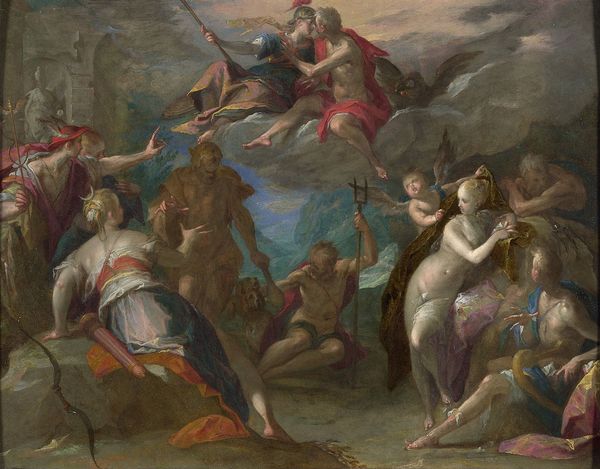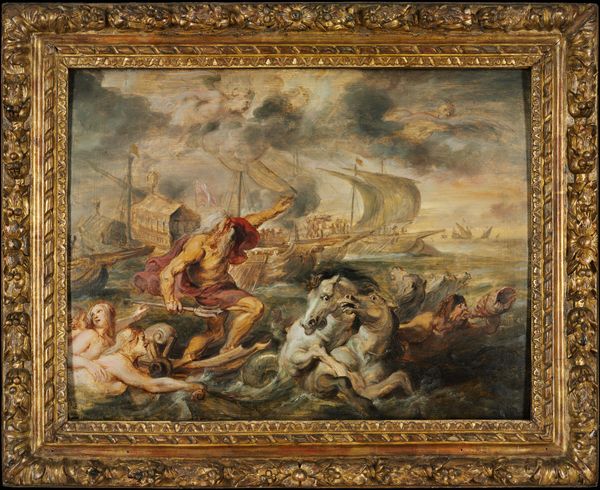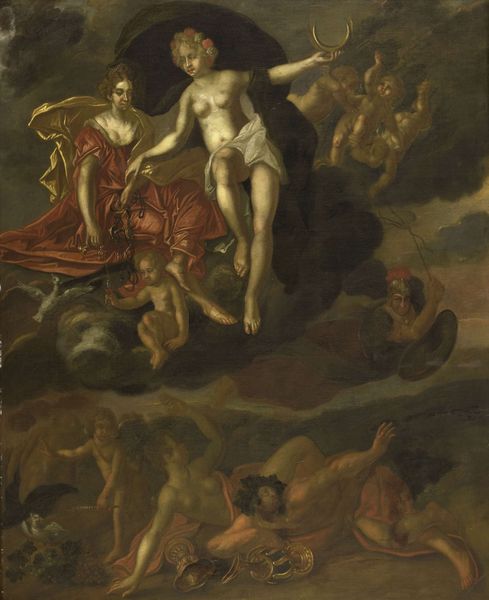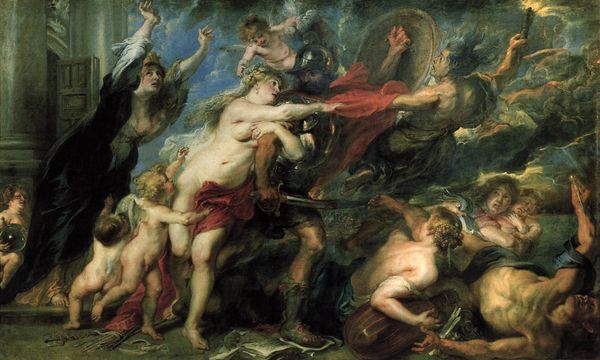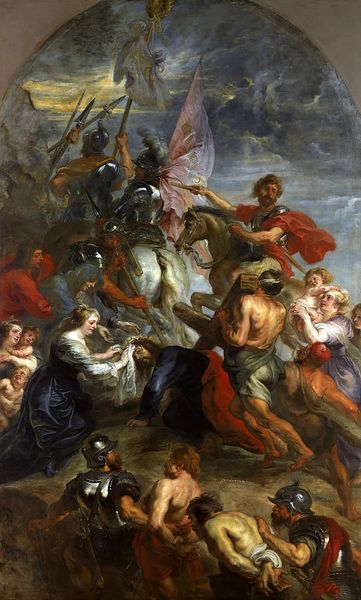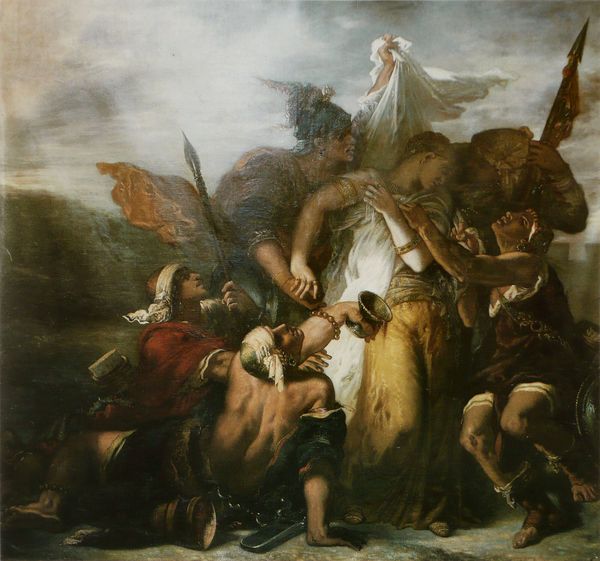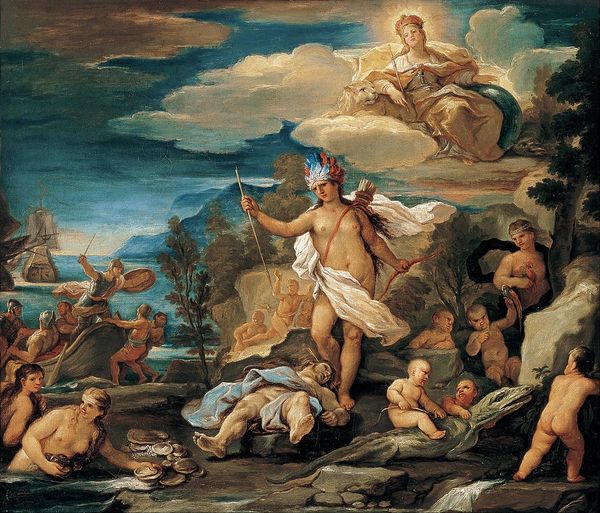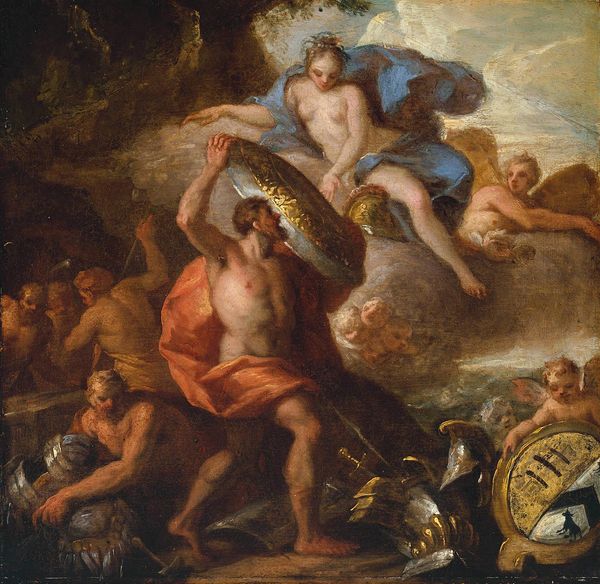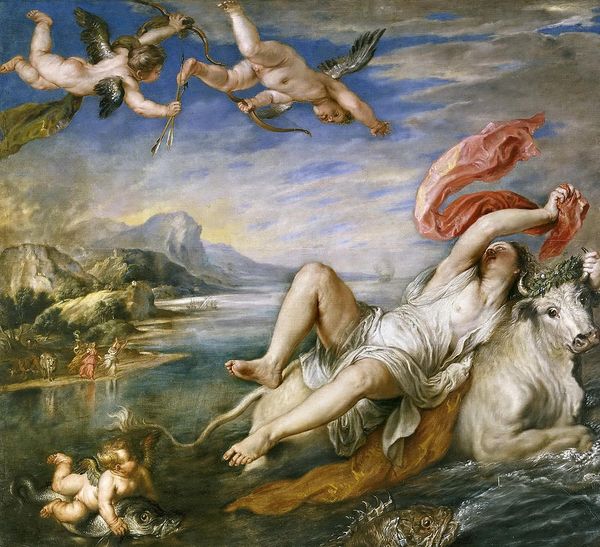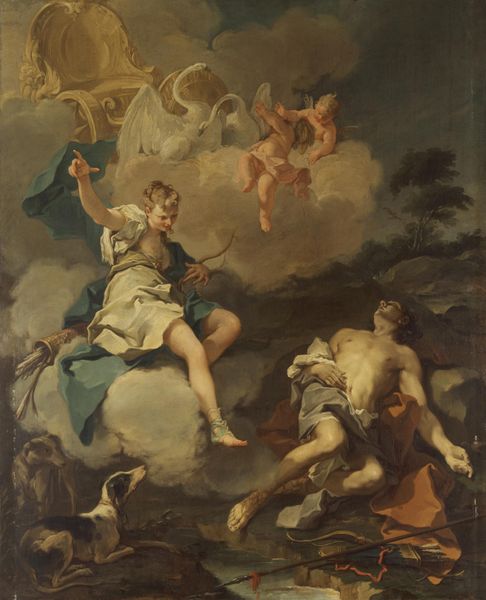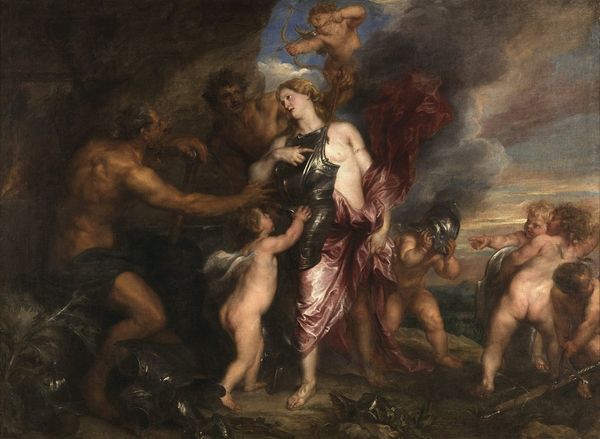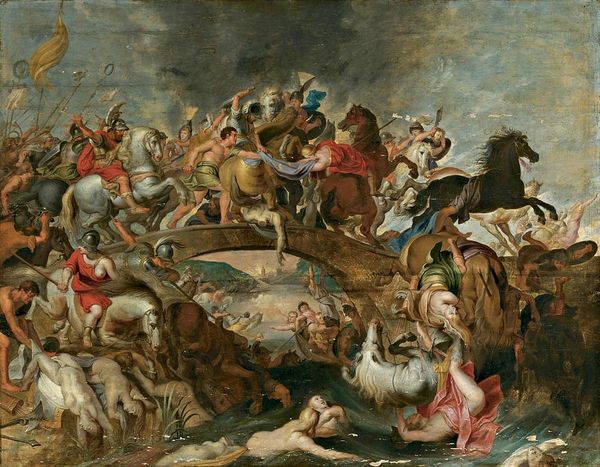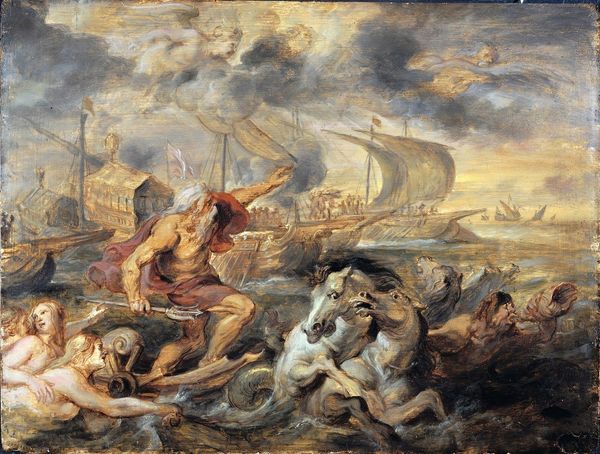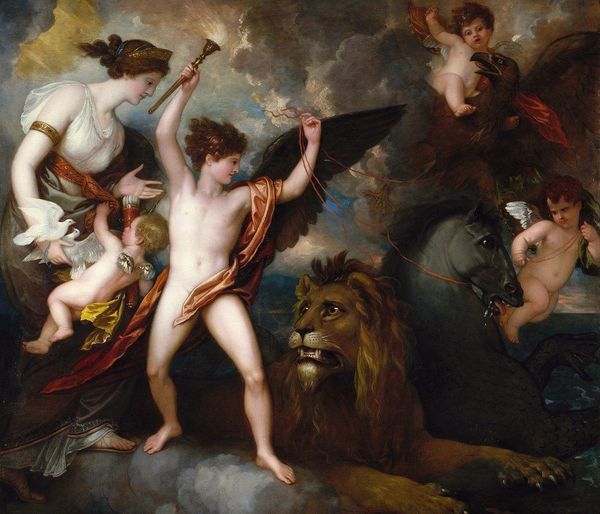
oil-paint
#
baroque
#
oil-paint
#
landscape
#
figuration
#
oil painting
#
mythology
#
history-painting
Copyright: Public Domain: Artvee
Peter Paul Rubens, a leading artist of the Baroque, painted ‘Quos Ego’ during an era of European expansion and conflict. It’s a moment of high drama with Neptune, god of the sea, rising up to quell a storm that threatens Aeneas’s fleet. Rubens masterfully uses the nude form to convey power. Neptune’s muscular body, along with the nymphs, and cherubic figures, are testaments to a very specific European ideal of beauty. But what does it mean to see these bodies idealized during a time of intense colonialism and slavery? The heroic and the sensual sit side by side here. As viewers, we're caught in a sea of complex emotions, admiration, perhaps unease. ‘Quos Ego’ is more than just a mythological scene. It’s a reflection of the cultural values and contradictions of Rubens’s time. The painting invites us to confront these issues head-on, much like Neptune confronts the storm.
Comments
No comments
Be the first to comment and join the conversation on the ultimate creative platform.

